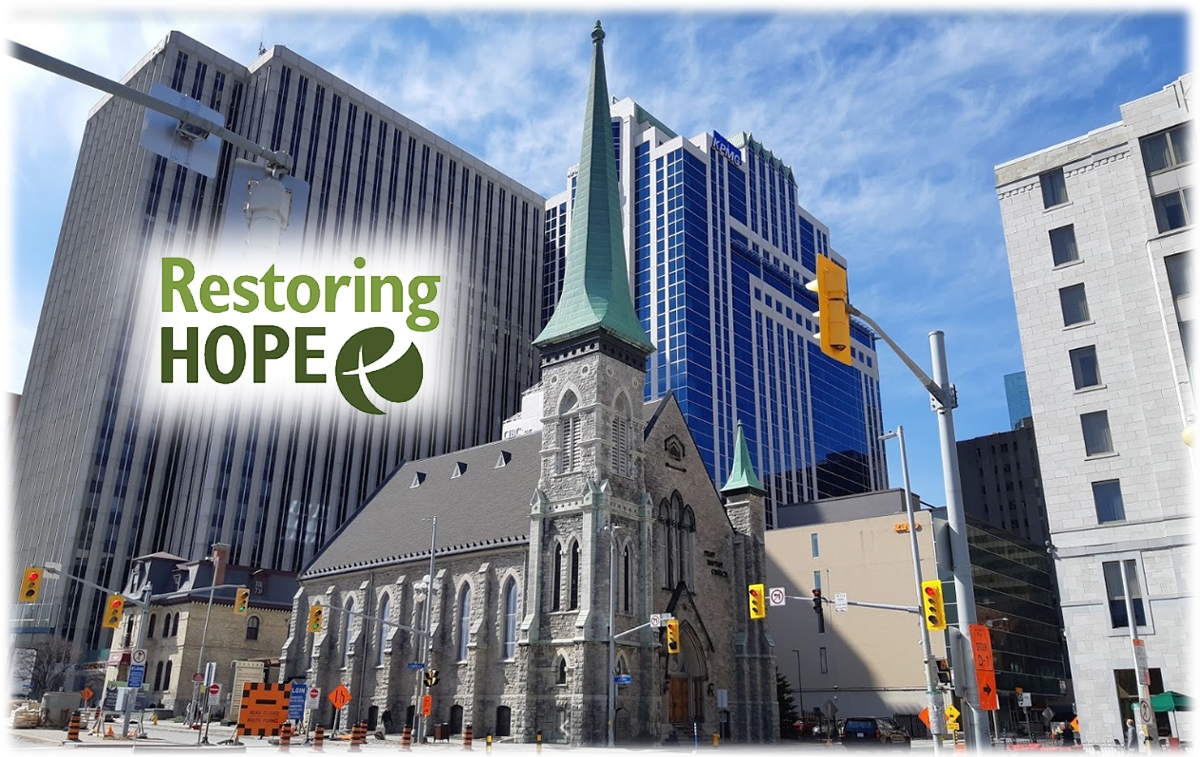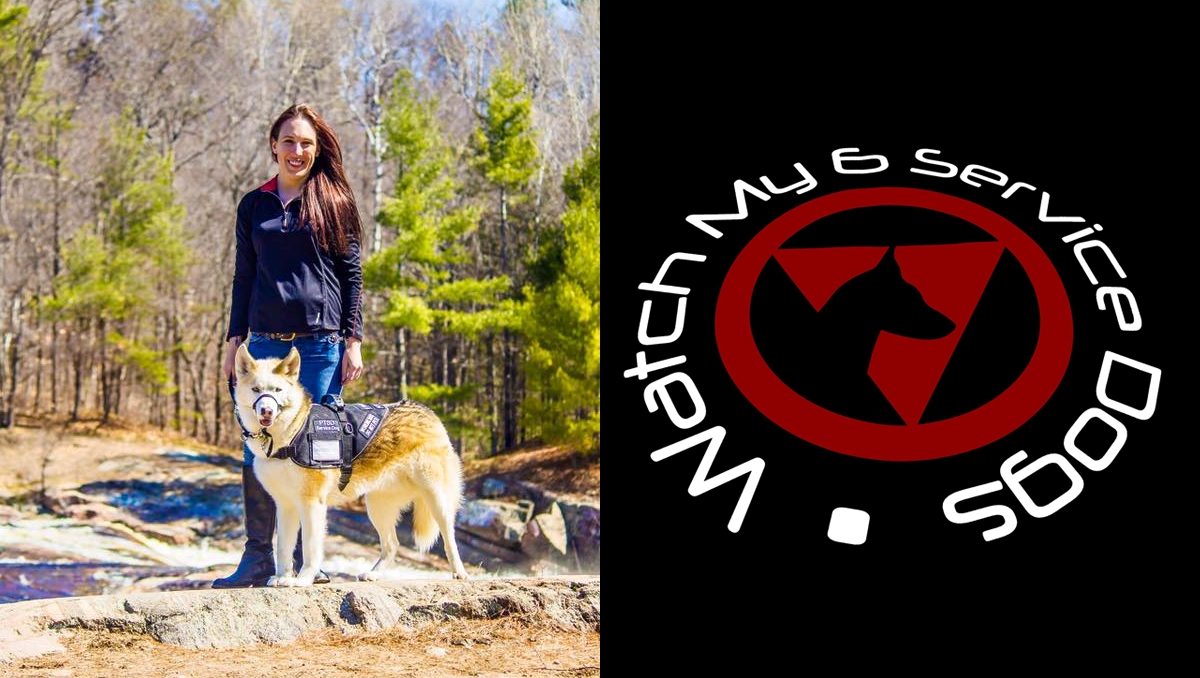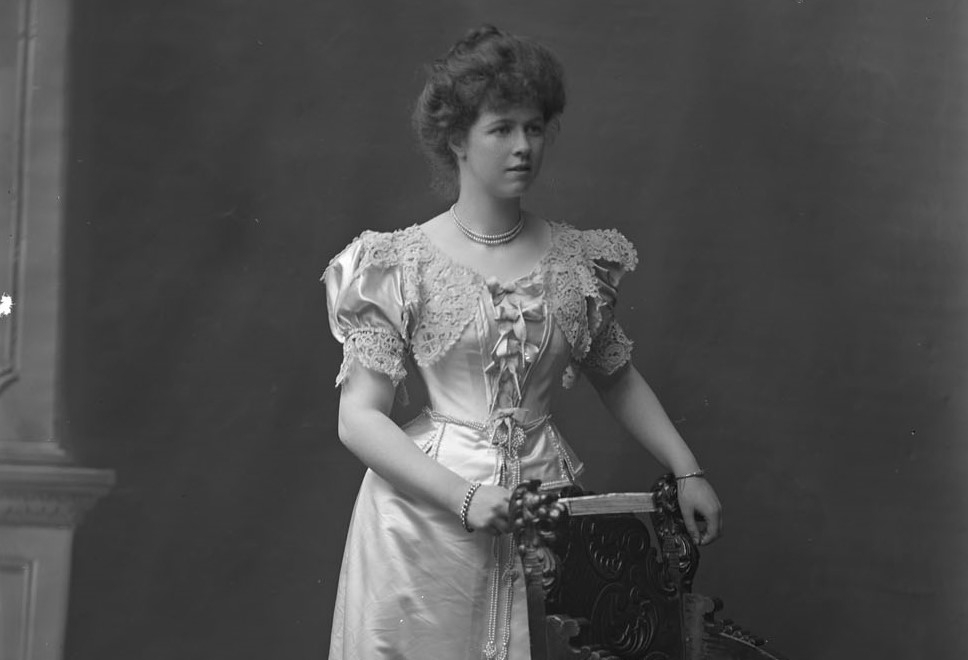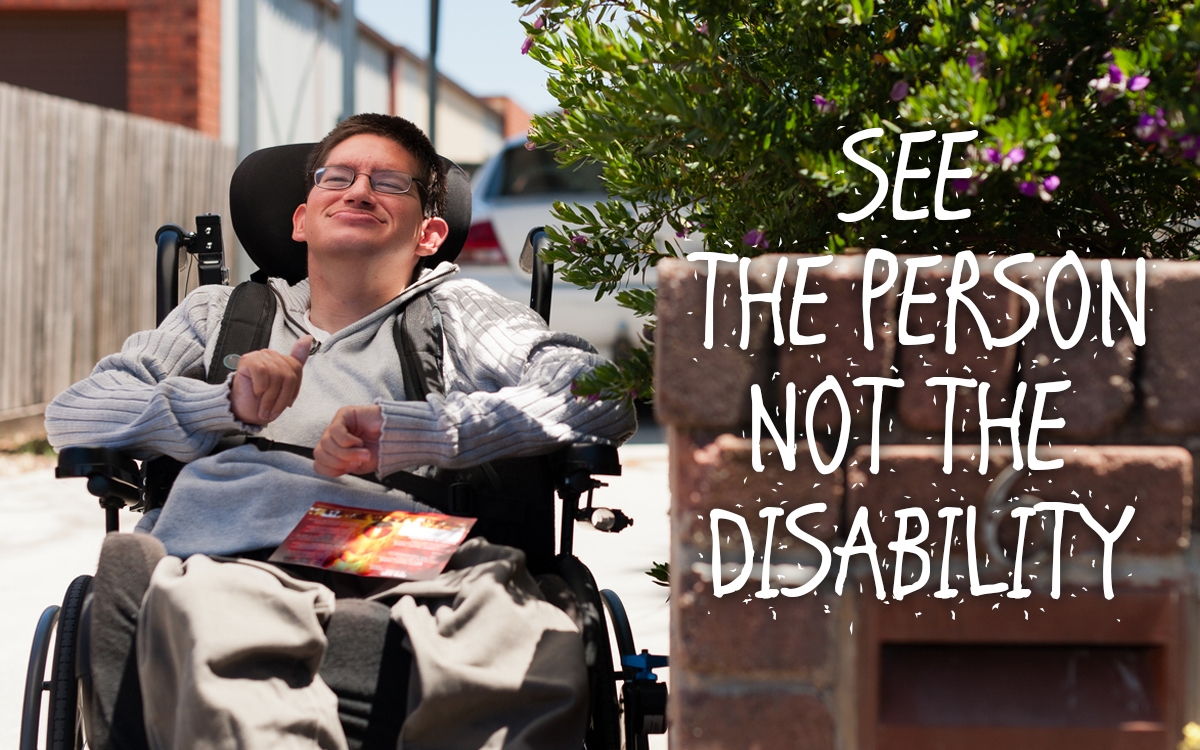
Activists look to restore hope in Ottawa’s homeless youth
Carleton University School of Journalism and Communication hold a yearly student-led initiative called Project J were students submit work for a chance to be published. OLM selected the following article which is a timely, Ottawa-focused piece on homelessness and community spirit. Congratulations to the author for a job well done!
By Emily Vaz, Carleton University School of Journalism and Communications
It's a cold, dark, and damp Ottawa night in late November. There is a group of teenagers with suitcases and large bags waiting outside the doors of the First Baptist Church on Laurier Street.
They have nowhere else to go. Inside those doors and down the stairs to the left, is an area specifically curated for them to spend the night in safety. There are beds with neatly folded sheets on top of them, bowls of snacks set out on a table at the front of the room, and an old television playing Pirates of the Caribbean.
Walking around the area, there is a separate room for girls to sleep and a kitchen packed with bottled drinks and food. In an area restricted to the resident youth, there are closets full of tightly packed labelled bins holding things like sheets and clothing, lockers with medical supplies, and volunteers pacing around the floor helping the residents and providing them with cooked meals.
Restoring Hope Ministries, located in the basement of the First Baptist Church, is an emergency overnight shelter for homeless youth. The shelter opened in 2013 and has been running in the same location since. The shelter offers community support, hot meals, food to go, clean beds, and necessities such as clothing and toothbrushes.
The shelter’s website says they also offer "low key mental health support and conflict resolution" to youth in need. The shelter also hosts engaging activities such as game nights, art nights, and movie nights. This can be seen on their Facebook page, a small blurb about discovering the youth's creativity, accompanied by a picture or video of them creating their art, or the art itself.
Jason Pino is the man who started Restoring Hope. Before his work at Restoring Hope, Pino worked with a few different charities related to helping homeless individuals. Pino worked with Capital City Mission, a drop in center on Rideau Street, and Ottawa City Ministries. He was the outreach worker there for about four and a half years, and this is where he started to work with youth.
Pino noted that youth are a vulnerable and overlooked demographic within Ottawa’s homeless population. He said he would often talk to other workers about the lack of space for youth in the city. They agreed with him that something needed to be done about it, but nothing ever happened.
"You knew the need was known, but how do you start it? Where do you get the money? Where do you get the workers? Who has the time? The youth pick up on this. They knew everyone else knew they didn't have a place to go but weren't doing anything about it, so subconsciously this sends them the message that they're not worth the effort. So for me, for all the obvious reasons, it was a good idea, but one of the main things that I kept trying to get across to the youth was that 'you are worth the effort,' " said Pino.
During his time working at Ottawa City Ministries, Pino said he consistently saw youth that had nowhere to go and that it was always a difficult journey going home for him, knowing he couldn't do what he wanted to in order to help.
Pino noted one experience that seemed to change things for him. A young lady he met during his outreach was making arrangements with an older man to go home with him and exchange sexual favours for drugs and a place to stay. Pino said this experience impacted him deeply.
"I took her aside and said, 'please don't do this, it's really dangerous, I don't want to see you get hurt,' and she said, ‘what other options do I have?’ And so that was an eye-opener for me. It wasn't necessarily that she wanted to, but that she didn't have any other options. She couldn't get into any other shelters. And so I started to feel afterward that it is so easy for us, as a society, to be critical of people who aren't doing as well as we think they should, but if we're not going to ensure that they actually have a better option or the ability to heal their lives or get better, than we don't get the right to criticize them. It sparked something in me, and I needed to be a part of creating a solution," said Pino.
Restoring Hope Ministries is not the first shelter for youth in Ottawa. Pino said the Youth Services Bureau has a young man's shelter and a young women's shelter, but the two were consistently full.
Pino said something that makes Restoring Hope Ministries different is that they offer services up to 24. According to their website, other shelters, like the Youth Services Bureau, only offer up until the age of 20.
Pino said that the shelter is trying to capture the transitional period where youth are immediately thrown into adult services. In his experience, Pino noted that there were lots of youth in their early 20s that were too scared to stay at the adult shelters, so he wanted to provide a place for them also.
The project was challenging, but Pino said he felt it was a necessary missing piece in the system. The shelter initially got its start in funding through private donations from people who believed in his idea and wanted to help.
Eventually, Pino said they applied and got charitable status, which allowed them to write tax receipts for donations. But overall, the process was slow.
"You present the idea, a few people come on board, and then as you get going, you start sharing stories and build momentum. The word gets out, and almost all of the funding is through private donors, churches, small grants, and it is growing each year," said Pino.
Fourth Avenue Baptist Church has since opened a similar operation. Between the two shelters, they have managed to provide shelter to youth seven nights a week.
Pino called Fourth Avenue Baptists Church's Haven Too (shelter for youth) their "sister location", and stated that it is a team effort when it comes to housing youth overnight. When Haven Too initially started, they reached out to Restoring Hope ministries to get some help and information on how to start. Pino said they have since gone their own way with it and have made it their own operation.
Pino said the shelter relies on a lot of its volunteers, but they're always looking for more so as not to burden any one person with too much work.
"On a regular basis we have at least 2-3 volunteers here each night that we are open. We are looking for more paid staff to be here on a consistent basis, it's hard to find people who can do this. The reason to have so many is not to overburden anyone, volunteers are doing other jobs, and they're giving extra of their time," said Pino.
Jeff Biggs, 42, is a worker for the Federal Government, Natural Resources Canada. And he has been volunteering at the operation for about six years.
"I believe the best way to love God is through other people, because God lives within everyone," he said. He also mentioned a book he read at the age of 19 guiding him down this path. The book was about the work that Doctors Without Borders do and was called Touched by Fire by Elliott Leyton.
Biggs said a particular quote in the book stood out to him, that what the doctors were doing was described as the "ecstasy of moral clarity." What he said he means by this is that no one person could look at what these doctors were doing and say that it wasn't the right thing to do.
"Not a lot of things are black and white like that," said Biggs. For him, his volunteer job at the shelter is similar. It is just the right thing to do by any standard.
Debora Long, 57, started volunteering with Restoring Hope five years ago after running into some other friends on their way back from a volunteer session there and she's been volunteering there ever since.
"I wanted a way to give back to my community. The commitment was once a month, and because it started later in the evening, it was easy to fit it into my schedule. I had been looking for something that I felt passionate about. My own children have been fortunate in what we have been able to provide for them. There are so many who have not. It is not the easiest place to volunteer. It is hard to see what the youth go through, how difficult their lives are, and sometimes how difficult they can be with the staff and volunteers. However, you come to realize that you make a difference. You provide a warm meal, a safe place to sleep, someone who will listen, and most importantly, someone who cares," Long said.
Long was originally aiming to be a research scientist but stopped that career path when her second child turned out to be triplets. She has always done volunteer work for her children at their schools, but for her, volunteering at Restoring Hope is the next step in helping the community.
The volunteer work differs from person to person. Some volunteers fundraise, some help with cooking meals, some collect essentials, and some stay overnight in the shelter in shifts to ensure the youth are safe throughout the night.
Long volunteered as a drop-in host so she would show up at 8:30 pm and set up the shelter for the night .
She said she and the other volunteers would also discuss any issues with the youth that were relevant, if anyone was really struggling or if anyone was in trouble. At 9:00 pm, the youth arrive and are provided with a meal, tended to for any immediate needs they may have; for example, they may need socks or band-aids. Then Long would leave at midnight.
"An important part of this role was to sit and chat with the youth, let them talk, engage if they were willing, and as you got to know them, catch up on their lives," said Long.
Before the pandemic, the shelter was available to both homeless and those who had housing but were struggling, low income, or had other issues like addiction. The number of people in the building had to be lowered when COVID-19 occurred, so now the shelter only allows youth who are staying the night and need a place to stay. Pino said he and the team still wanted to maintain their essential emergency overnight service. People who were only coming for supplies such as food and clothing were still given to them, just at the door and not inside.
Due to the pandemic, Long’s role has changed a bit along with many other volunteers. For Long, she has a daughter who is immunocompromised so she has chosen to remain at home for that reason. Now she cooks meals for the shelter from home with one of her daughters.
Nicole Chan, the associate director of Restoring Hope Ministries, said that they had to develop a COVID-19 guide for the volunteers and changed their volunteer clearance process.
Chan said they had to adhere to the new guidelines, which unfortunately affected their drop-in availability. Regarding the demand for the shelter, Chan said, "The number of clients is currently lower, but their needs are greater, especially concerning mental health and addictions."
Pino said another large change was food security. Many drop-ins had to close, and other safe spaces for youth in the city also had to shut down.
Before the pandemic, Restoring Hope Ministries had not received any funding from the city, but this changed during COVID-19. Pino says most of the money they received went towards buying extra food for the youth to combat the food security issue.
"This summer, we even did a daytime drop in, which we've never done before, because some agencies had to close down and the youth needed somewhere to go during the day. I'm really proud of the way we responded to specific COVID-19 needs. And then, as things got better and those agencies reopened, we shifted the funding to other projects and closed the daytime drop-ins. It's been a really neat experience to see how our volunteers rallied to keep this place open and make sure we could still offer as many services as possible because the youth were losing a lot of services," said Pino.
Pino’s goal is to give these youth the tools and rest they need to eventually get into housing and improve their lives. And Pino said most youth who pass through eventually see some form of housing and even permanent housing.
"We frequently see youth get back into housing. Also, those youth do better. They take the opportunity to go back to school and finish. We have really good services in Ottawa, like Operation Come Home, and the Youth Services Bureau really covers the education piece and the job training piece, so I think we work really well together. We cover the emergency shelter piece and then refer the youth to those other services where they can get that more help, and different kinds of help. I would say most of them find their housing or jobs through those services. I think it's helpful that they can have a place to stay overnight, and then that obviously makes it easier for them to do the other parts of their life when they know they have a safe place to sleep,” said Pino.
Getting clean, and regaining their shelter is unfortunately not the only outcome. In 2017, one of their regulars passed away from an overdose. Long said it was a tragedy.
"Such a lovely young man, liked by all and a pleasure to be around. He was an addict and was facing a lot of his own demons. At the funeral, it came to light what loving family and friends he had and how accomplished an athlete he had been. It was very upsetting. Mental illness and addiction can affect anyone, and this tragedy was a big reminder of that," said Long.
Long said this event was devastating to her but also inspired her to keep doing as much as she can for the cause. Long said the longer you work with the youth; you learn not to judge as you can never truly know their story.
"You have to have pretty thick skin, let the tough stuff slide off of you because you will be challenged. Do what you can because every little bit matters. I definitely view the world in a different way because I see a world now that I have always lived separated from," said Long.
Addiction often seemed to be a recurring factor with homeless teens. The volunteers and Pino have all seen many youth battle with addictions and mental health. Pino is working on expanding and making a detox center and a human trafficking initiative to aid young people in those situations.
A detox center is a space in which individuals with addictions can get clean, the centers also offer withdrawal management. The reason for detox clinics is because most rehab centers require entrants to be anywhere from two weeks to 30 days clean/sober before they can enter the program.
"It can become an obstacle if you don't have a place to go to get clean and enter the program. So we want to provide a missing piece for youth. There aren't any youth-specific detox or withdrawal management places, so that's a piece that we want to work on. If a youth who comes to us says, 'I wanna get clean, or I wanna get help' to say 'ok, we can take you from our shelter and move right into this withdrawal management program' and at least give them a good start," said Pino.
Pino said that the emergency shelter would still run. Still, they hope to expand into a detox center as well for youth once they can. Pino says he is currently looking at different buildings for the center and is currently trying to find one within the budget. As for right now, the project's future relies on getting resources and funding. He is hopeful for the future and said he hopes to expand to provide youth with even more tools for success and recovery in the future.
“It takes a lot of money, it doesn't return monetary profit back to you, it's human profit. You invest in human lives, and you get that return,” Pino concluded.











